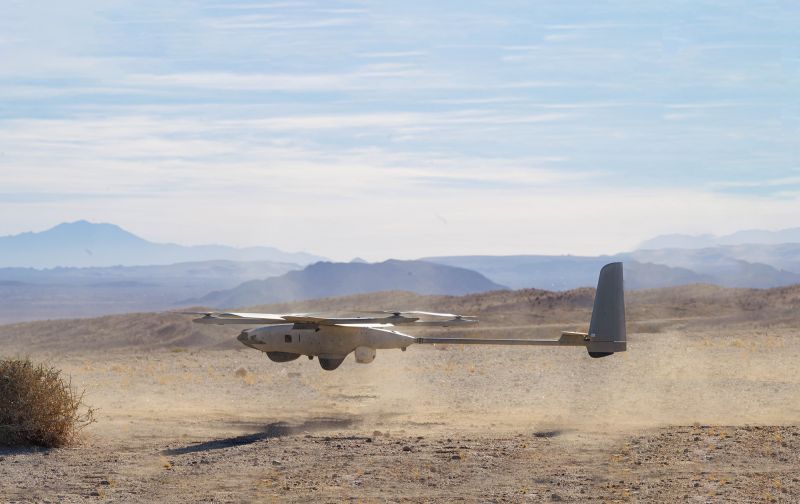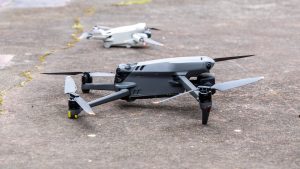Redwire’s Edge Autonomy Stalker: A New Entry in the DoD’s Elite Blue UAS List
The defense technology sector is often associated with complex terminologies, approval processes, and exclusive lists. When a state-of-the-art drone gains acceptance into the U.S. Department of Defense’s (DoD) prestigious Blue UAS List, it marks a noteworthy milestone. In July 2025, Redwire Corporation celebrated the inclusion of their Edge Autonomy Stalker Uncrewed Aerial System (UAS) on this elite list. This recognition opens the doors to enhanced opportunities in secure government and defense operations, marking a significant achievement in the U.S. drone industry.
1. Decoding the Blue UAS List
The Blue UAS List is essentially the Pentagon’s exclusive roster of trusted drone partners. Managed by the Defense Innovation Unit (DIU) and, as of 2025, co-managed with the Defense Contract Management Agency (DCMA), this list comprises commercially developed drones that have undergone rigorous scrutiny for cybersecurity, National Defense Authorization Act (NDAA) compliance, and operational testing. Achieving a place on this list is not merely an accolade; it’s a key to securing substantial federal contracts and supporting homeland security and defense missions.
- Security: Concerns regarding foreign-manufactured drones, particularly those from adversarial nations, have driven the creation of the Blue List’s stringent review process to mitigate risks such as espionage, data leaks, and cyber threats.
- Standardization: This initiative ensures that drones procured by federal agencies adhere to stringent standards, ensuring reliability and performance.
- Performance: Only drones proven to perform under rigorous, real-world conditions make the list.
- NDAA Compliance: U.S. guidelines restrict federal use of drones incorporating components from specific prohibited countries, with the Blue UAS List enforcing these restrictions.
2. Highlights of Redwire’s Edge Autonomy Stalker
The Edge Autonomy Stalker from Redwire stands out on the Blue UAS List as a versatile, combat-proven Group 2 UAS. These mid-size drones, typically weighing 21-55 lbs, are designed for beyond visual line of sight operations and are frequently used in tactical missions.
- Modular Open Systems Architecture (MOSA): The drone is built on a flexible architecture that allows integration with third-party sensors and future technological advancements, facilitating rapid upgrades for evolving mission needs.
- Proven Global Experience: With hundreds of thousands of flight hours across six continents, the Stalker is not just a prototype but a valuable asset for intelligence, surveillance, and reconnaissance (ISR).
- Rich Legacy: Edge Autonomy, as a subsidiary of Redwire, leverages nearly four decades of expertise in autonomous systems and optics, serving the U.S. DoD, civilian agencies, and allied nations worldwide.
- Committed to Cybersecurity: The Stalker UAS attained Blue List status by passing rigorous cybersecurity tests, ensuring that no critical components originate from restricted sources.
- Operational Agility: Designed to cope with various environments, from freezing arctic conditions to scorching deserts, the Stalker is suitable for a wide range of mission profiles.
“The Blue List selection empowers Redwire to supply combat-proven, commercially developed UAS technology to meet the DoD’s evolving needs at scale,” expressed Peter Cannito, Chairman and CEO of Redwire.
3. Path to Blue UAS Listing
The journey to the Blue UAS List involves rigorous testing, including vast evaluations both in controlled environments and actual field conditions to validate operational efficacy and resilience.
- Security Audits: Comprehensive assessments of both hardware and software are conducted to detect vulnerabilities, with stringent supply chain transparency requirements.
- Independent Verification: Entities like the Association for Uncrewed Vehicle Systems International (AUVSI) often engage to verify standards compliance.
- Ongoing Improvements: With the DCMA’s involvement, the process is expected to expand, incorporating frequent updates and AI-driven capabilities for platform verification.
Inclusion on the Blue UAS List simplifies procurement for federal agencies, frequently being a prerequisite for sensitive government operations.
4. Implications of Stalker’s Approval
The Stalker UAS, now a trusted tool for U.S. and allied military and governmental entities, offers a proven, modular ISR solution ready for rapid customization without new approval delays.
Given the constant concerns about security and data integrity, the availability of a secure, American-made system becomes not just advantageous but essential policy.
- Market Dynamics: The defense drone industry is fiercely competitive. With its Blue List approval, Redwire joins other elite U.S. drone manufacturers benefiting from increased demand for tactical deployment and commercial applications.
- Boosting Innovation: The demand for accelerated domestic drone production encourages companies like Redwire to develop drones that are adaptable for future technologies.
5. Future Prospects for Blue UAS
As the Blue List evolves towards a zero trust framework with AI integration, the list will become even more accessible, helping users quickly identify platforms that meet specific security requirements.
- Enhanced Resources: With the support from DCMA, the management of the Blue List is expected to advance, speeding up the approval process for manufacturers.
- Emphasis on Security: Only drones that comply with strict security standards, avoiding non-compliant components such as unauthorized cameras or radios, will be considered.
6. Insights from Experts
The adaptability of Stalker drones is evidenced by their diverse applications, from military patrolling to disaster response and environmental mapping, showcasing their flexibility beyond conventional defense tasks.
“Innovation shines through post-deployment experience rather than marketing pitches,” assert Redwire engineers, emphasizing feedback from user experiences in challenging environments.
7. Relevance for Business and Safety
While Blue UAS-approved drones are key assets in military contexts, in 2025, they increasingly appeal to public safety agencies, infrastructure enterprises, and emergency response teams. If adopting drones for critical operations, it is prudent to consider platforms like the Stalker for the highest security standards and versatile operational capacity.
8. Stalker’s Competitive Context
| Drone Model | Key Feature(s) | Primary Use Case | Compliance |
|---|---|---|---|
| Edge Autonomy Stalker | Modular ISR, Group 2 MOSA | Defense, ISR missions | Blue UAS, NDAA |
| Teal 2 | Low-light, rugged | Tactical/Police ISR | Blue UAS, NDAA |
| BRINC LEMUR 2 | Night ops, SWAT support | Hostage rescue, public safety | NDAA |
| Inspired Flight IF800 | Swappable payloads | Mapping, inspection | NDAA, Blue UAS |
| Parrot Anafi USA | FLIR thermal, zoom | Tactical reconnaissance | NDAA, Blue UAS |
| AeroVironment Puma 3 AE | Long-range comms | Defense, border patrol | NDAA |
9. Concluding Thoughts
The addition of the Stalker UAS to the Blue List is a defining achievement in advancing secure, scalable drone use within both government and industry. This development not only impacts present capabilities but also ignites new research partnerships and future technologies. As the pace of drone innovation continues, ensuring systems are secure and adaptable is paramount for long-term success.
For organizations building drone programs, prioritizing platforms with proven security and adaptability, such as those on the Blue List, is a strategic move.













